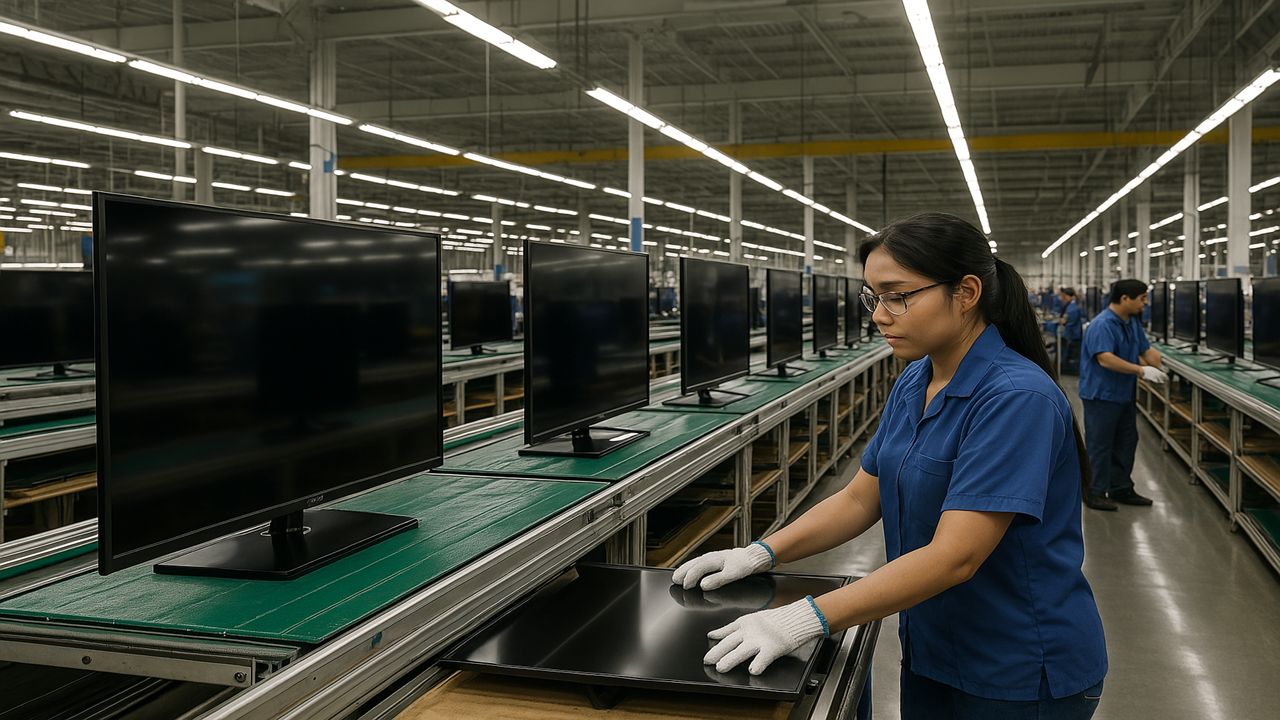Samsung Shields TV Business from US Tariffs with Mexico Shift
Samsung Electronics is dodging major tariff impacts on its TV business by shifting production to Mexico. While Chinese competitors like TCL and Hisense face steep U.S. tariffs, Samsung’s global manufacturing footprint gives it a strategic edge. However, its memory and smartphone divisions could still be affected by broader trade disruptions.

- Country:
- United States
Samsung Leverages Mexico to Dodge U.S. Tariff Fallout
As the United States ramps up its tariff war, Samsung Electronics is positioning itself to weather the storm—at least when it comes to its television business. While many tech manufacturers brace for impact, Samsung says it's relatively insulated, thanks to a key strategic move: manufacturing most of its North American TV inventory in Mexico.
The announcement came Monday from Yong Seok-woo, president of Samsung's visual display business, who underscored that the company’s Mexico operations will spare its TV segment from the brunt of U.S. tariff hikes. With Chinese-made electronics facing a staggering 54% cumulative tariff, this Mexico-based production offers a crucial buffer in an increasingly protectionist trade climate.
Tariff Troubles Mount for Chinese Competitors
The U.S. tariff escalation announced last week hits Chinese electronics particularly hard. In addition to the 20% levies already in place, Chinese imports will now face an extra 34%, further tilting the cost-competitiveness scale.
That’s bad news for Samsung’s Chinese rivals like TCL and Hisense, who depend more heavily on China-based production. The tariff spike could leave them scrambling to rework supply chains or raise consumer prices, opening the door wider for Samsung to gain market share in the U.S.
Diversified Production Keeps Samsung Nimble
Yong emphasized that Samsung is prepared to shift its global production footprint in response to evolving tariff regulations. With roughly 10 manufacturing bases worldwide, the South Korean tech giant maintains the flexibility to adapt quickly.
“We are constantly monitoring tariff policies, and we’ll allocate production accordingly,” Yong stated. This global adaptability not only shields the company from abrupt trade changes but also helps stabilize pricing and availability for U.S. consumers.
Still, Samsung is not entirely in the clear. Its other core businesses—namely memory chips and smartphones—could feel the squeeze. Tariffs could suppress global demand or make certain product lines more expensive to export, particularly if other countries retaliate with duties of their own.
Investor Anxiety Hits Samsung Stock
Despite its proactive supply chain strategy, Samsung couldn’t escape the wider investor panic triggered by the new U.S. tariff announcements. Shares of Samsung Electronics fell 4.3% on Monday as global markets reacted to the policy uncertainty and the potential for a prolonged trade war.
Investors are especially concerned about the company’s semiconductor division, which has been a profit engine for years but is vulnerable to demand shifts caused by higher import costs and economic slowdown in key markets.
Strategic Advantage in a Volatile Landscape
As the world’s leading TV manufacturer, Samsung’s ability to sidestep the tariff trap—at least for one of its largest revenue streams—could offer a rare advantage. With competitors reeling from increased costs and potential delays, Samsung’s foresight in regionalizing production may help it retain its market dominance.
But with trade tensions still unfolding and further tariff changes looming, the long-term picture remains hazy. For now, Samsung’s TV playbook appears smart—but in a global economy this volatile, nothing stays static for long.










